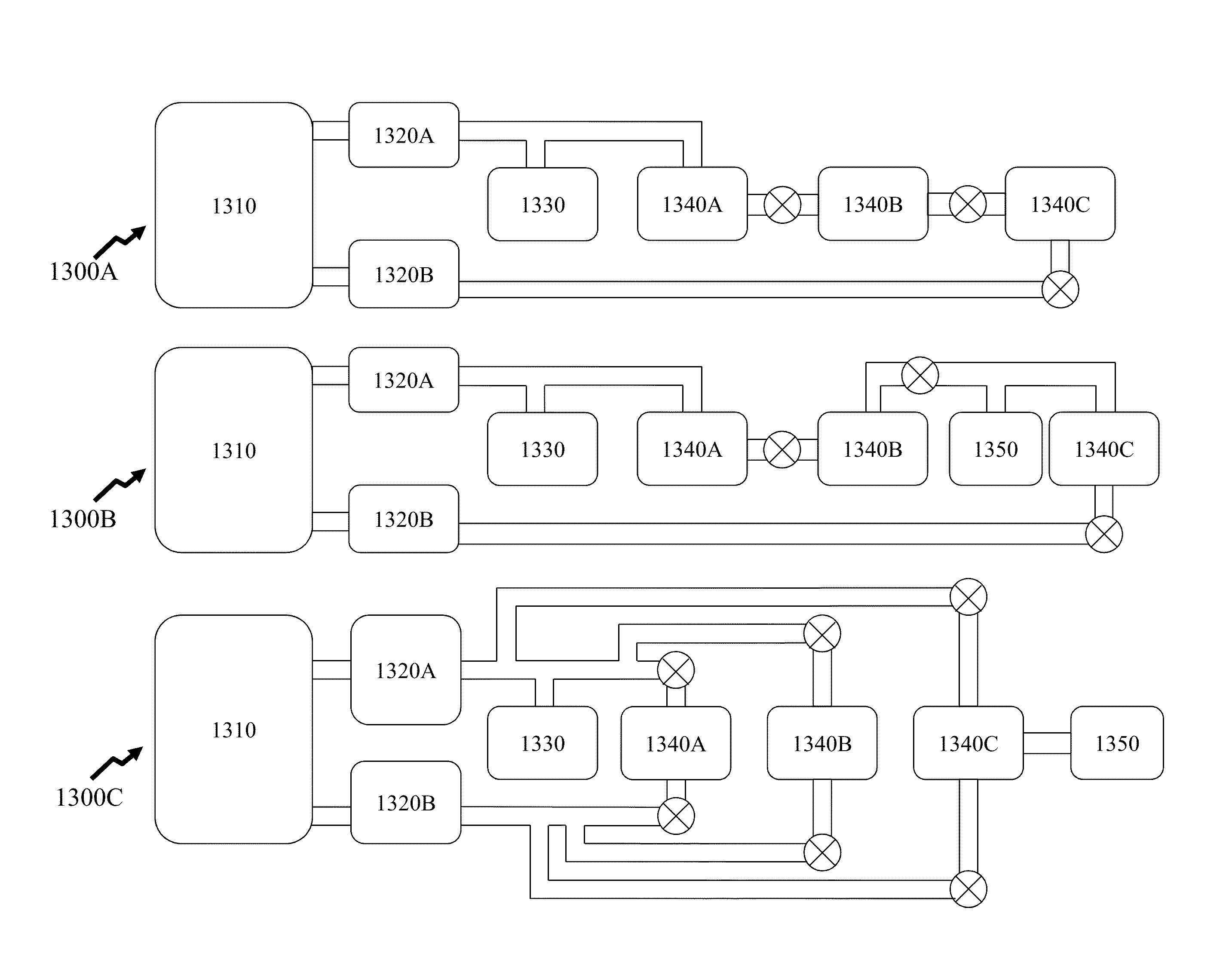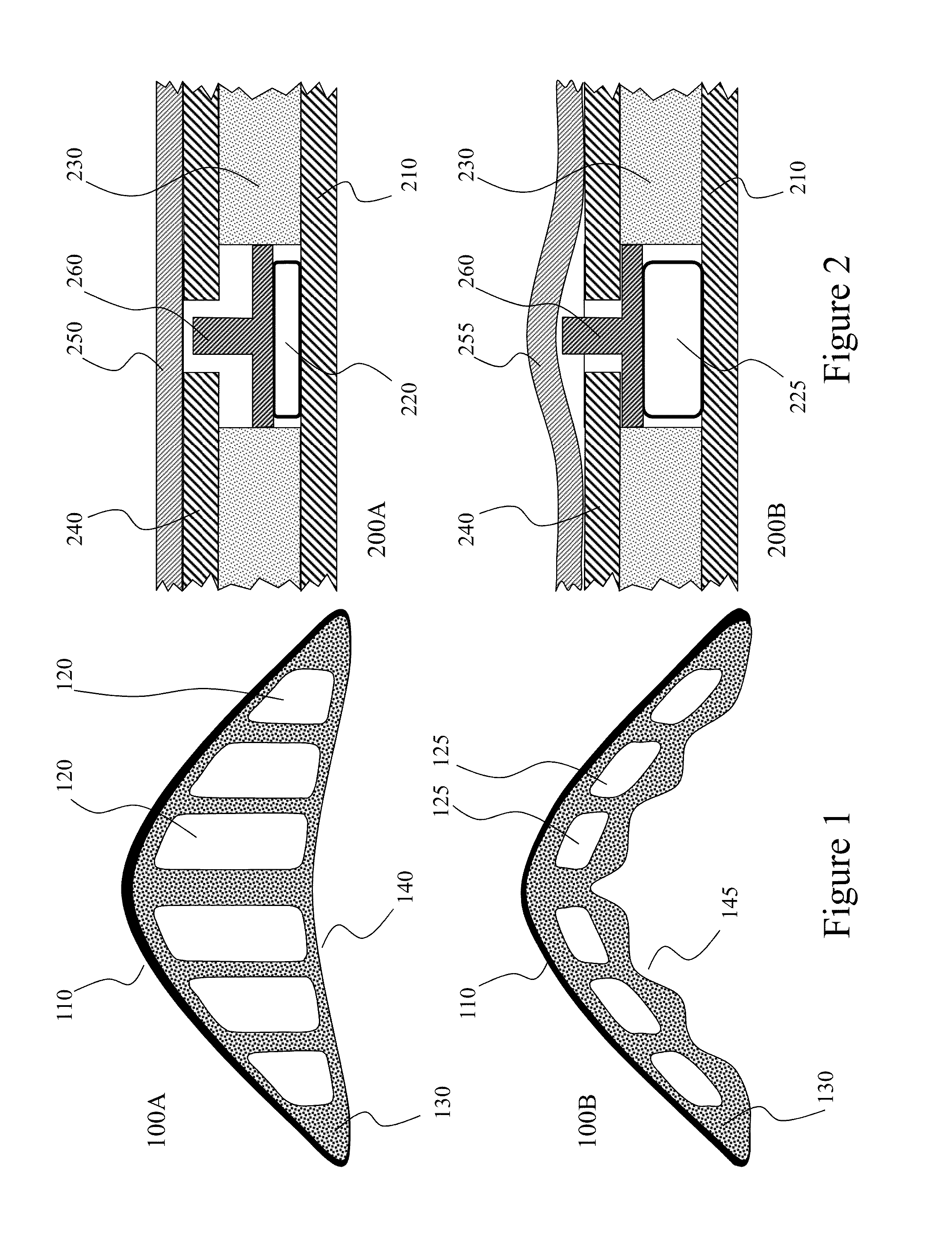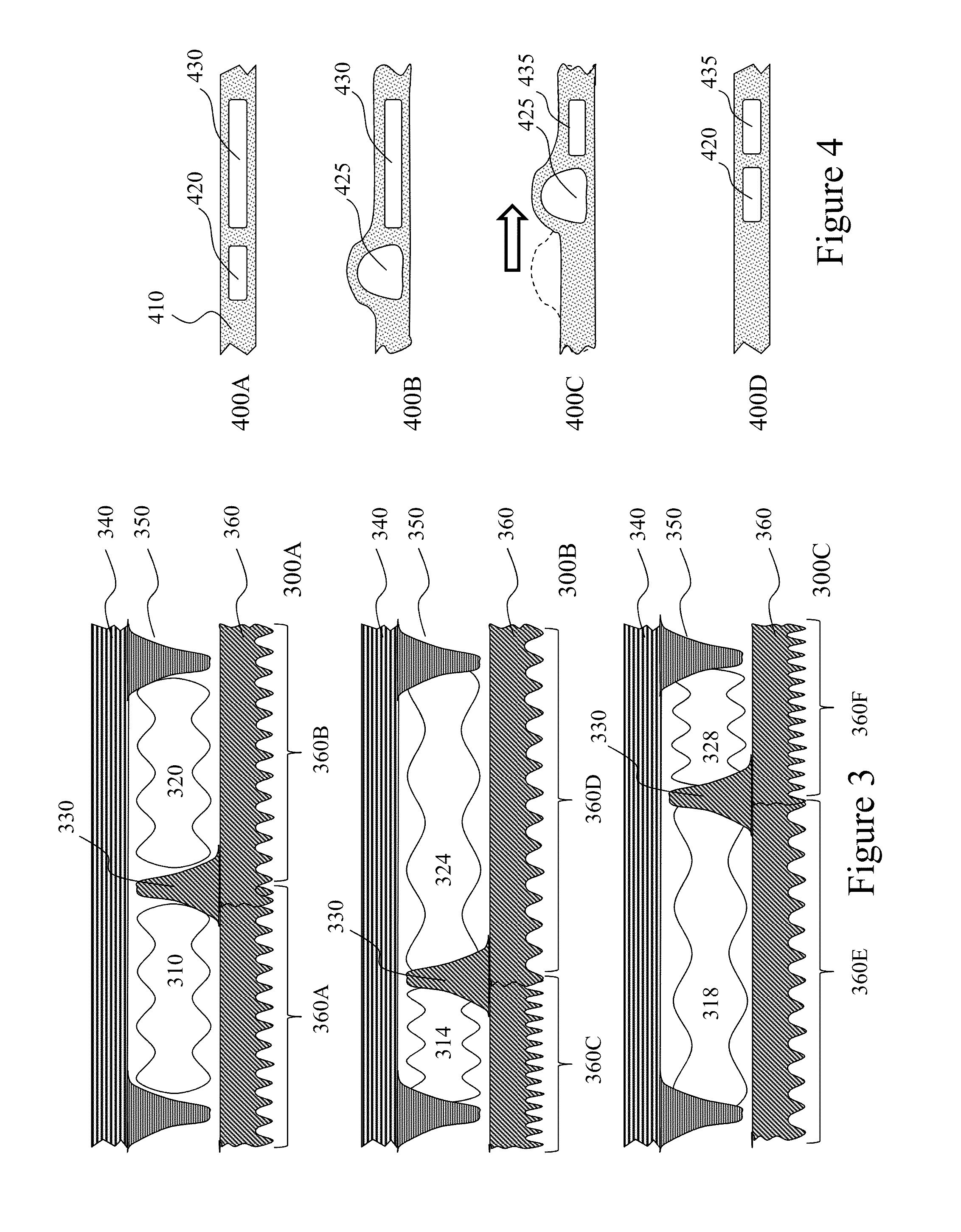Vibrators typically operate through the operation of an
electric motor wherein a small weight attached off-axis to the motor results in vibration of the motor and hence the body of the portion of the vibrator coupled to the
electric motor.
More batteries consume more space within devices which are generally within a relatively
narrow range of physical sizes approximating that of the average
penis in penetrative length and have an external portion easily gripped by the user thereby complicating the design.
Typically, toys that are large due to power requirements are not as successful as more compact toys.
However, such electric motors with off-axis weights cannot easily operate at low frequencies when seeking to induce excitation to the user in a manner that mimics physical intercourse and stimulation where for example stimulation would be very low or
low frequency and high or very
high amplitude.
For example providing operation below 40 Hz, below 10 Hz, below 4 Hz, below 1 Hz cannot be provided where small DC motors cannot produce much torque at low
revolutions per minute (RPM) and therefore cannot move the large
heavy weight to produce
high amplitude variations.
However, others have not been commercially successful to date including, for example, the use of linear screw drive mechanisms to provide devices that adjust in length.
Dildo is the
common name used to define a phallus-like sex toy, which does not, however, provide any type of vibrations.
Due to its small dimension, it is typically powered by a single battery and usually has limited controls; some may have only one speed.
However, to date the commercial deployment of sex toys exploiting
fluidics has been limited to the provisioning of lubricating oils or gels during use of the device to reduce friction and subsequent pain /
irritation either through extended use of the device or from low natural
lubrication of the user upon whom the device is used.
When considering users of the prior art devices described above these present several limitations and drawbacks in terms of providing enhanced functionality, dynamic device adaptability during use, and user specific configuration for example.
As noted supra, the commercial deployment of devices exploiting
fluidics has been limited to
lubricant release during device use despite several prior art references to using fluidics including, for example, those described below.
The
system taught is bulky and complex requiring set-up through needle valves to set the volumes of air adjusted within the massaging sleeve during the suction and injection phases.
However, Kain does not teach the use of such motion for stimulation purposes but rather to allow for adjustment of that end of the device to accommodate different users allowing, for example,
insertion, inflation and hence retention of that device end.
However, Gil teaches that vibratory action of the device is provided by a conventional
electric motor with off-axis weight.
It is evident therefore to one skilled in the art that the hydraulic driven devices as taught by Faulkner, Gil, Kain, Levy, Schroeder, and Stoughton do not provide devices with the desirable and beneficial features described above which are lacking within known devices of the conventional mechanical activation with electrical motors.
However, to date as discussed supra hydraulic devices have not been developed or commercially deployed despite the prior art fluidic concepts identified above in respect of fluidic devices and these prior art pumps.
This is likely due to the fact that fluidic pumps are bulky, have low efficiency, and do not operate in the
modes required for such devices, such as, for example,
low frequency, variable duration, and pulsed for those providing primary pumps for dimensional adjustments or for example
high frequency operation for those providing secondary pumps for vibration and other types of motion / excitation.
Solenoids whilst offering larger force than
voice coil motors have a poor ability to exert a steady force on a long
stroke piston, typically a few millimeters, and where
constant force solenoids are implemented these tend to be short
stroke with increased complexity in the design of the coil, body and shape of the cross-section of the
plunger.
However, such actuators are primarily designed for long
stroke, large
load displacement, and as replacements for pneumatic cylinders.
Accordingly, the resulting
magnet is complicated and expensive and whilst Ibrahim in “T.
 Login to View More
Login to View More 


